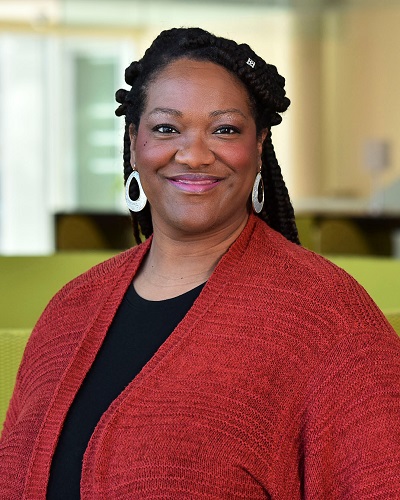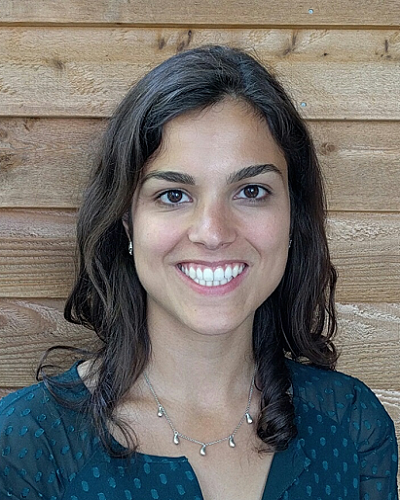
Fall 2022
When K is More than Just a Letter: Top Tips and Considerations for Early Career Investigators
Rachel D. Wells, PhD, RN✉; Optimization of Behavioral and Biobehavioral Interventions SIG


Shena Gazaway, PhD and Kate Merrill, MSc, PhD
This year has been an unprecedented year of growth in interest in optimization as evidenced by increases in the Optimization of Behavioral and Biobehavioral Interventions Special Interest Group (OBBI SIG) membership, participation in optimization training sponsored by the OBBI SIG and others, and the number of optimization-related publications . Frequently, this booming optimization interest comes from early career investigators who are planning or in the middle of writing career development award applications (frequently called Ks or training grants) or pilot applications to establish their program of research. Building from the OBBI SIG’s previous Outlook article outlining commonly asked questions and optimization resources,1 this article provides top tips and considerations for optimization-related grant writing for early career investigators. For these top tips and considerations, we asked two recently funded, early career OBBI SIG members to share their thoughts and advice on successfully applying for and conducting optimization studies.
If you could go back to when you were first preparing your career development grant or pilot grant, what tips or strategies would you tell yourself or that you wished someone would have told you?
Dr. Shena Gazaway (School of Nursing, University of Alabama at Birmingham): “I was writing both a career development award and a pilot grant that would utilizing the Multiphase Optimization Strategy (MOST) framework. I wish I would have told myself to give myself time and space for the deep thinking and learning related to MOST. You need to have time to think about the concept, approach, methodology, and protocol practicalities not only related to your work and your applications, but also to have an understanding of the state of the science.”
Dr. Kate Merrill (Center for Dissemination and Implementation Science, University of Illinois at Chicago): “I would recommend that investigators consider building an initial round of data collection or other way of getting feedback on the components they plan to test using the MOST framework. I had planned out my components one way for my K application but having now conducted focus groups with stakeholders and done a scoping review of programs, we may change the components. I’m grateful that I had formally built into the application an intervention adaptation stage (my Aim 1) since it has given me the opportunity to work closely with our community partners to develop a deeper understanding of the context and issues to consider—all of which informs the selection of components.”
Are there practical details to optimization-related design or protocol that you recommend fellow early career investigators consider in their studies?
Dr. Gazaway: “Reviewers are looking for you to address anticipated challenges or problems or what the next step will be if you don’t get the results you were anticipating. It is important to know how you will move forward and use the data you’re collecting for the next phase. For example, what if my pilot demonstrates that some component or multiple components or some other part of the study is not feasible or acceptable. Or what if participants are not staying in condition? So, including a few sentences about those potential issues and some strategies to curtail them is important.”
Dr. Merrill: “I would recommend carefully thinking through the logistics of how to carry out an optimization pilot/trial for the grant. In my case, we have a group intervention that will be delivered across multiple sites—community-based organizations (CBOs). I had said in my application that we would randomize pairs of participants to 1 of 16 conditions “regardless of their CBO membership” but I am questioning whether this will make the most sense, practically. Will there be enough pairs randomized to each condition at every CBO to be able to run the intervention successfully? How does the number of facilitators at each CBO come into play? What about the possibility of contamination?”
Both Drs. Gazaway and Merrill offered some advice regarding optimization-related resources when writing a training or pilot grant:
Dr. Gazaway: “By the time you are writing the grant, you are most likely working with a mentor or several mentors with at least one of them with familiarity in optimization or MOST. One of the best tips I have is to use their templated language regarding MOST or optimization as a starting point for how you will concisely describe the framework in your grant. Additionally, reach out to others, particularly near peers who are a year or two into their optimization grant. Or use NIH RePORTER to identify newly funded grants aiming to optimize an intervention.”
Dr. Merrill: “I initially relied heavily on Dr. Linda Collins’ books on the optimization of behavioral, biobehavioral, and biomedical interventions,3-4 which are available free of charge. I think the Optimization Special Interest Group at SBM is a fantastic resource, so I would definitely recommend that to future investigators. By becoming a member, you have access to previous in addition to upcoming webinars on MOST. It is also great that there is now the free online Coursera course on MOST.”2
One of the easiest ways to stay up to date with the many SBM and OBBI SIG resources and events that Dr. Merrill referenced above is to follow the OBBI SIG on Twitter (@OBBI_SIG). The #ToReadTuesday and #FundedFriday Twitter series starts again in September. Additionally, to continue to build and sustain optimization-related research capacity, particularly of early career investigators, the OBBI SIG piloted a new series, Mind Mapping MOST, in 2021-2022. Due to the success of the series and continued interest, Mind Mapping MOST will return in October 2022. If you are interested in the Mind Mapping MOST series or Twitter series or have other ideas or comments, the OBBI SIG encourages members and nonmembers to reach out to us via Twitter, email, or attend our annual business meeting at the SBM conference.
References
- OBBI SIG. Resources for Researchers Interested in Intervention Optimization. Outlook. Fall 2021; Retrieved from https://www.sbm.org/publications/outlook/issues/fall-2021/resources-for-researchers-interested-in-intervention-optimization/full-article
- Collins, L. & Guastaferro, K. Introduction to the Multiphase Optimization Strategy (MOST). Coursera: NYU. Retrieved from https://www.coursera.org/learn/multiphase-optimization-strategy#instructors
- Collins, L. Optimization of Behavioral, Biobehavioral, and Biomedical Interventions. The Multiphase Optimization Strategy (MOST). 2018. Retrieved from https://link.springer.com/book/10.1007/978-3-319-72206-1
- Collins, L. Optimization of Behavioral, Biobehavioral, and Biomedical Interventions. Advanced Topics. 2018. Retrieved from https://link.springer.com/book/10.1007/978-3-319-91776-4.